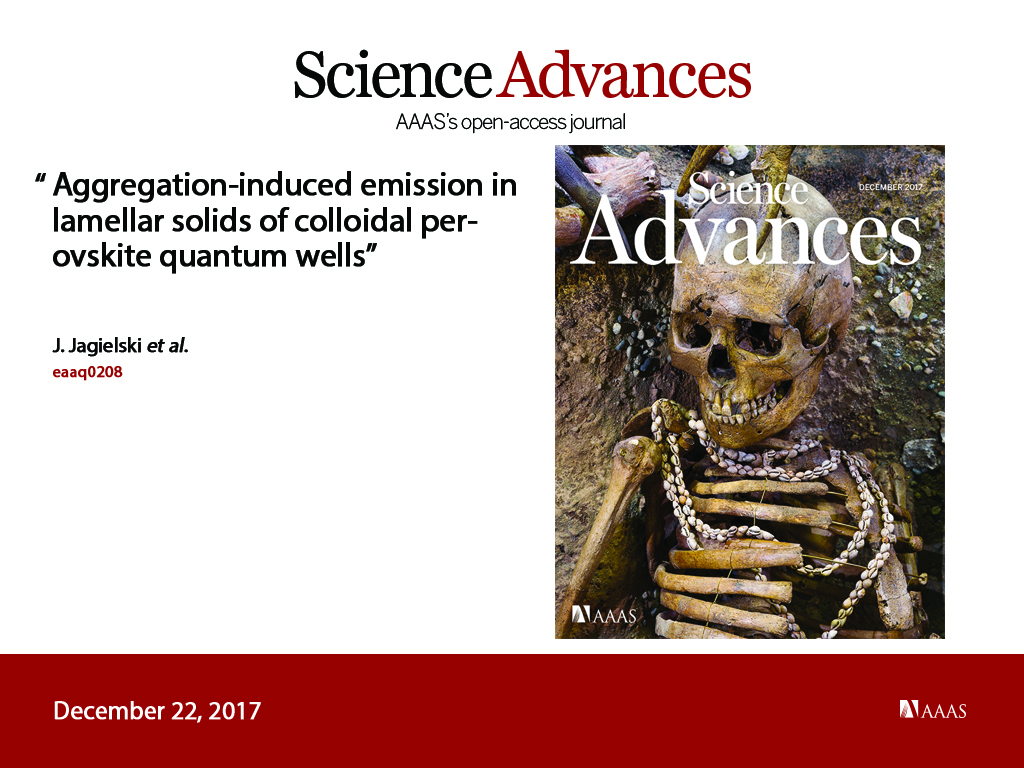[Sci. Adv.] Aggregation-induced emission in lamellar solids of colloidal perovskite quantum wells
We establish the first physical mechanism enabling "Aggregation-Induced Emission (AIE)" in quantum-confined semiconductor nanocrystals.
DownloadPDF Downloadvertical_align_bottom (Open Access)

The outstanding excitonic properties, including photoluminescence quantum yield (ηPL), of individual, quantum-confined semiconductor nanoparticles are often significantly quenched upon aggregation, representing the main obstacle toward scalable photonic devices. We report aggregation-induced emission phenomena in lamellar solids containing layer-controlled colloidal quantum wells (QWs) of hybrid organic-inorganic lead bromide perovskites, resulting in anomalously high solid-state ηPL of up to 94%. Upon forming the QW solids, we observe an inverse correlation between exciton lifetime and ηPL, distinct from that in typical quantum dot solid systems. Our multiscale theoretical analysis reveals that, in a lamellar solid, the collective motion of the surface organic cations is more restricted to orient along the [100] direction, thereby inducing a more direct bandgap that facilitates radiative recombination. Using the QW solids, we demonstrate ultrapure green emission by completely downconverting a blue gallium nitride light-emitting diode at room temperature, with a luminous efficacy higher than 90 lumen W−1 at 5000 cd m−2, which has never been reached in any nanomaterial assemblies by far.
